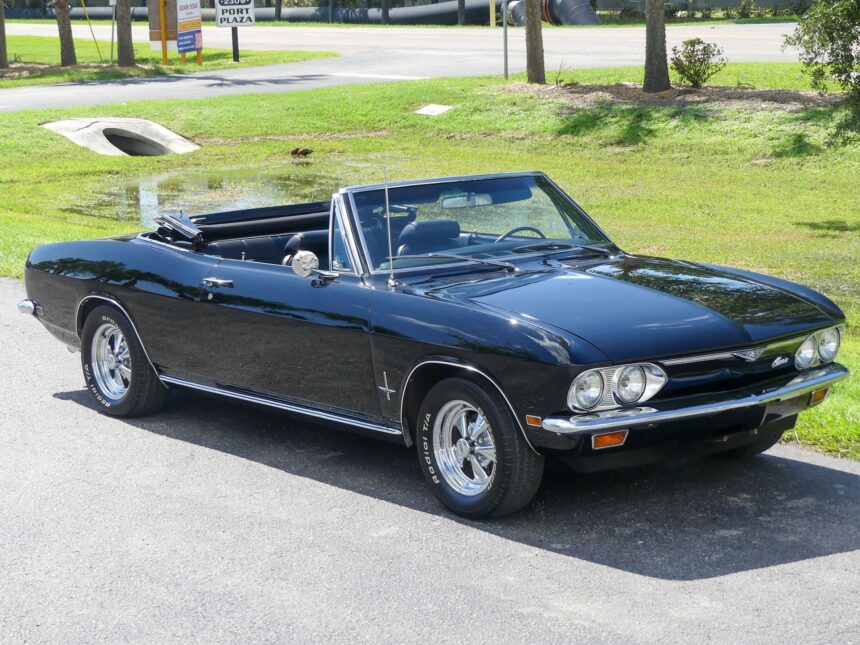Introduction
The 65 Chevrolet Corvair stands as one of the most unique and controversial vehicles in American automotive history. Dubbed “the poor man’s Porsche” by some and vilified by others, the Corvair challenged the norms of car design during its time. Unlike other American cars of the 1960s it featured a rear-mounted air-cooled engine and independent suspension—a setup more common in European sports cars. The 1965 model year, in particular is often considered the high point of Corvair production due to its complete redesign and mechanical improvements.
Let’s take a deep dive into what makes the 1965 Chevy Corvair a classic the controversies surrounding it, and its legacy in the collector car world today.
The Birth of the Corvair
Chevrolet introduced the Corvair in 1960 as a response to growing consumer demand for compact economical cars. At the time, American automakers were locked in a battle to compete with the increasing popularity of imported European cars such as the Volkswagen Beetle. General Motors saw an opportunity to create a vehicle that could rival these imports in terms of size fuel efficiency and cost.
The Corvair’s design was radical. It featured a rear-mounted horizontally opposed six-cylinder air-cooled engine—a stark departure from the traditional front-engine, water-cooled layout seen in nearly all American cars of the time. The engine configuration freed up space in the front trunk and allowed for a lower center of gravity, which contributed to improved handling dynamics.
1965: The Pinnacle Year
By 1965, the Corvair had undergone significant evolution. The 1965 model marked the beginning of the second generation of Corvairs and introduced a sleek new body style with clean lines, semi-fastback roofline, and improved suspension.
Key Features of the 1965 Chevy Corvair:
| Feature | Description |
| Engine | Air-cooled flat-six, 2.7L (164 cu in) |
| Horsepower | Up to 180 hp (turbocharged Corsa model) |
| Transmission Options | 3-speed manual, 4-speed manual, 2-speed Powerglide automatic |
| Body Styles | 2-door coupe, 4-door sedan, convertible |
| Suspension | Fully independent rear suspension |
| Brakes | Four-wheel drum (discs optional later) |
| Curb Weight | Approx. 2,600–2,700 lbs |
The 1965 Corvair also introduced the Corsa, a sportier model designed for enthusiasts. The Corsa came with a turbocharged version of the engine, delivering a remarkable 180 horsepower—a figure that placed it within reach of more expensive European sports cars.
Engineering Innovations
What set the 1965 Corvair apart from other cars of its era was its advanced engineering:
1. Rear Engine Layout
This layout was rare in American cars and gave the Corvair unique driving characteristics. The rear weight bias allowed for better traction, especially in inclement weather. However, it also posed handling challenges at the limit—particularly in earlier models.
2. Fully Independent Suspension
While earlier Corvairs used a swing axle suspension (which contributed to handling issues), the 1965 model featured a fully independent rear suspension, similar to the Corvette Sting Ray. This made the car more predictable and improved ride quality and cornering stability.
3. Turbocharged Performance
The Corvair was one of the first mass-produced American cars to offer a turbocharger. The Corsa’s turbocharged engine was a marvel at the time enabling strong performance from a relatively small engine.
The Ralph Nader Controversy
No discussion of the Corvair is complete without mentioning Ralph Nader a consumer advocate who published Unsafe at Any Speed in 1965. In the book, Nader criticized the safety of American automobiles and singled out the Corvair’s early swing axle rear suspension as being particularly dangerous.
Although the 1965 Corvair had already corrected the suspension issues with a new independent setup the book dealt a heavy blow to the car’s public image. The resulting media storm lawsuits and Congressional hearings contributed to declining sales and led to the eventual discontinuation of the Corvair in 1969.
Ironically, a later U.S. Department of Transportation report in 1972 concluded that the Corvair was no more unsafe than comparable cars of its time, but the damage to its reputation had already been done.
Variants and Trims
The 1965 Corvair came in several trims and body styles to suit a wide range of buyers:
Monza
The Monza trim was aimed at style-conscious buyers. It included upgraded interior trim, bucket seats, and optional accessories like air conditioning and a radio.
Corsa
As mentioned, the Corsa was the performance model offering the most powerful engine choices and a sportier dashboard with extra instrumentation.
500 Series
The base model was more utilitarian, with fewer features and a lower price point.
Collector’s Appeal
Today, the 1965 Chevy Corvair enjoys a loyal following among classic car enthusiasts and collectors. It’s particularly popular with those who appreciate engineering innovation and want something different from the typical muscle car or hot rod.
Reasons for Collector Interest:
- Unique styling with clean, European-inspired lines
- Advanced suspension for the era
- Air-cooled engine reminiscent of Porsche and VW
- Affordable entry point into the classic car market
- Underdog legacy and controversial history
Despite the past controversies the 1965 Corvair has aged well and is considered one of the best-handling American cars of the 1960s.
Conclusion
The 1965 Chevy Corvair represents a bold experiment by General Motors—a car that broke the mold in almost every way. From its rear-mounted, air-cooled engine to its sleek body lines and advanced suspension, the Corvair was decades ahead of its time in some respects.
Though it faced public scrutiny and was immortalized in controversy history has been kinder to the Corvair than its critics were in the 1960s. The 1965 model, in particular, is a gem among classic cars blending innovation style and an enduring mystique that continues to captivate enthusiasts.
In a world of lookalike muscle cars and chrome-laden cruisers, the 1965 Corvair was—and still is—a true original. Whether you’re a collector, a history buff, or just someone who appreciates quirky cars with a story the ’65 Corvair deserves your attention.




